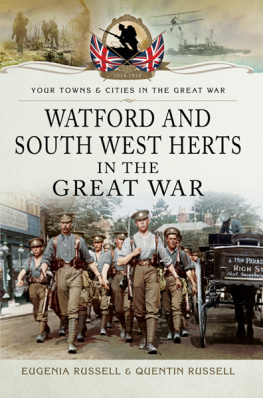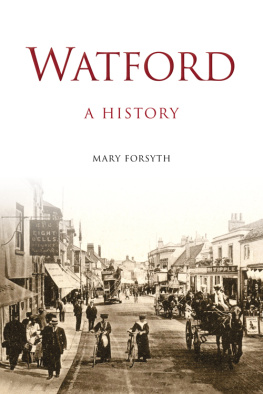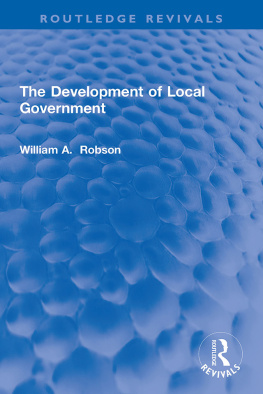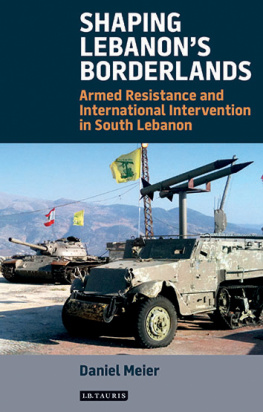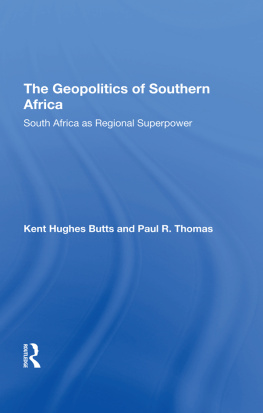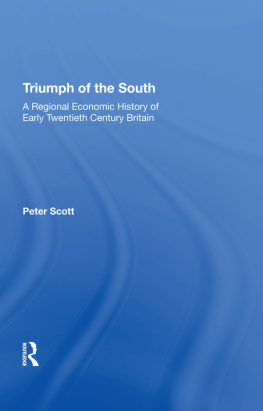First published in Great Britain in 2015 by
PEN & SWORD MILITARY
an imprint of
Pen and Sword Books Ltd
47 Church Street
Barnsley
South Yorkshire S70 2AS
Copyright Eugenia Russell and Quentin Russell, 2015
ISBN: 978 1 78346 374 9
PDF ISBN: 978 1 47386 608 9
EPUB ISBN: 978 1 47386 607 2
PRC ISBN: 978 1 47386 606 5
The right of Eugenia Russell and Quentin Russell to be identified as the authors of this work has been asserted by them in accordance with the Copyright, Designs and Patents Act 1988.
A CIP record for this book is available from the British Library
All rights reserved. No part of this book may be reproduced or transmitted in any form or by any means, electronic or mechanical including photocopying, recording or by any information storage and retrieval system, without permission from the Publisher in writing.
Printed and bound in England
by CPI Group (UK) Ltd, Croydon, CR0 4YY
Typeset in Times New Roman by Chic Graphics
Pen & Sword Books Ltd incorporates the imprints of
Pen & Sword Archaeology, Atlas, Aviation, Battleground, Discovery, Family History, History, Maritime, Military, Naval, Politics, Railways, Select, Social History, Transport, True Crime, and Claymore Press, Frontline Books, Leo Cooper, Praetorian Press, Remember When, Seaforth Publishing and Wharncliffe.
For a complete list of Pen and Sword titles please contact
Pen and Sword Books Limited
47 Church Street, Barnsley, South Yorkshire, S70 2AS, England
E-mail:
Website: www.pen-and-sword.co.uk
Contents

Abbreviations of Awards for Gallantry or Meritorious Service

VC | The Victoria Cross |
DSO | The Distinguished Service Order |
DSC | The Distinguished Service Cross Royal Navy |
MC | The Military Cross |
DFC | Distinguished Flying Cross |
AFC | Air Force Cross |
DCM | The Distinguished Conduct Medal |
MM | The Military Medal |
DFM | Distinguished Flying Medal |
AFM | Air Force Medal |
MSM | The Meritorious Service Medal |
MiD | Mentioned in Despatches |
Citation for Gallantry Award |
Introduction

Before the War
In retrospect the summer of 1914 is often viewed as the last golden moment of the Edwardian era. With Europe on the brink of total war, Southern England appears frozen in its own imagined idyll; a land where, in Rupert Brookes revered dream, time stood still with the church clock at ten to three and honey still for tea. To the people of Britain the unfolding drama across the Channel seemed far away, as they enjoyed the picnic-perfect weather, the forecast set fair for the coming August Bank Holiday.
Hertfordshire was then a mostly rural county. Life moved to traditional country rhythms and in this world of large estates and country houses, long established hierarchies and customs were largely respected. Even in the towns the aristocratic families and the landed gentry continued to exercise a paternalistic local influence and authority.
On the outskirts of Watford were the Grove, the Georgian residence of the Liberal politician Lord Hyde, the 5th Earl of Clarendon, and Cassiobury Park, the estate of George Capell, the 7th Earl of Essex, with its Tudor House. Both landowners were involved with the affairs of the town. In addition, Gorhambury House, near St Albans, was the Palladian style mansion of Viscount Grimston, the 3rd Earl of Verulam, who had represented St Albans in Parliament. Similarly, Hatfield House, the famous Jacobean seat of the Conservative politician and statesman Viscount Cranbone, the 4th Marquis of Salisbury, dominated the small town.
After the devastation and turmoil of the Great War much of this way of life was no longer viable, and in the democratic new order that followed it soon became a distant memory. The estates were broken up and the country houses sold. The rolling green hills on Hertfordshires southern border were drawn into the sprawl of Greater London, to be industrialised and subsumed into the suburban world glorified in the poster dreams of Metroland.
During the summer of 1914, change was, in reality, already in the air. There was industrial strife, unrest in Ireland, and the suffragettes were agitating for the vote. Factors such as technological innovation and increased access to its benefits were eating away at the complacency of the establishment. Across Europe, from 1910 onwards war had begun to seem inevitable to many. This appetite for militarism was not universally shared. As the writer and cartoonist Max Beerbohm (18721956) prophesied, war would be not so much a purge as an additional poison.
Even in rural areas of Hertfordshire still dominated by the large landowners, social and technological changes were already impacting on the stolid pastoral round of the region. The break up of the large estates had begun, along with the consequent transformation to urban development that became such a feature of the interwar years. Improved transport links with London brought the south of England within range of suburban sprawl. Light industries, particularly those with a metropolitan connection, such as printing and the embryonic British film industry, had begun to flourish a trend that was to continue at a greater pace after the war.
Transport connections to the capital were by now so superior to those across the county east to west, that some Hertfordshire County Council meetings were held in Holborn, rather than Hertford or St Albans. This transition was driven in part by proximity to London, but also by the growth of Watford itself, which was expanding into the surrounding countryside. By 1901 Watford had become the largest town in the county and its growth prompted nearby Bushey Council to elect to become an urban district in 1906, for fear that the village would become absorbed by its larger neighbour.
In the 1830s Watfords population was a mere 3,000, but by 1914 it had usurped the position of St Albans, which, with its ancient market and abbey, had historically dominated the region. The Diocese of St Albans not only administered the Anglican parishes but it was also a major landholder. In 1877 St Albans underlined its importance when the abbey was elevated into a cathedral and the town was granted city status.
The role reversal was slow in coming. A map of 1849 shows Watford lying between the rivers Gade and Colne, as, in Daniel Defoes words, still little more than a genteel market town, very long, having but one street, and liable to flooding where it crossed marshy land near the Colne. Defoes description of Watford in his Tour Through the Whole Island of Great Britain (1724) was systematically reproduced in pamphlets and tour guides for at least 100 years. Yet, little had changed when David Downer described Watford and neighbouring Bushey in his memoir written during the Great War:
Seventy years ago Watford had only one street High-street commencing at the Toll Gate at the bottom of the town near the Railway Arches, and crossing the River Colne by a bridge a much narrower one than the present one, and with a ford at the side for horses and carts to go through, and I expect the town took the name from it of Wet or Whatford. For passing through the toll gate 6d. was charged for a horse and cart and 3d. for a man on horseback. At the end of the garden at Frogmore House, ran a narrow lane (generally full of water), which was the entrance to Bushey Meads
Next page
